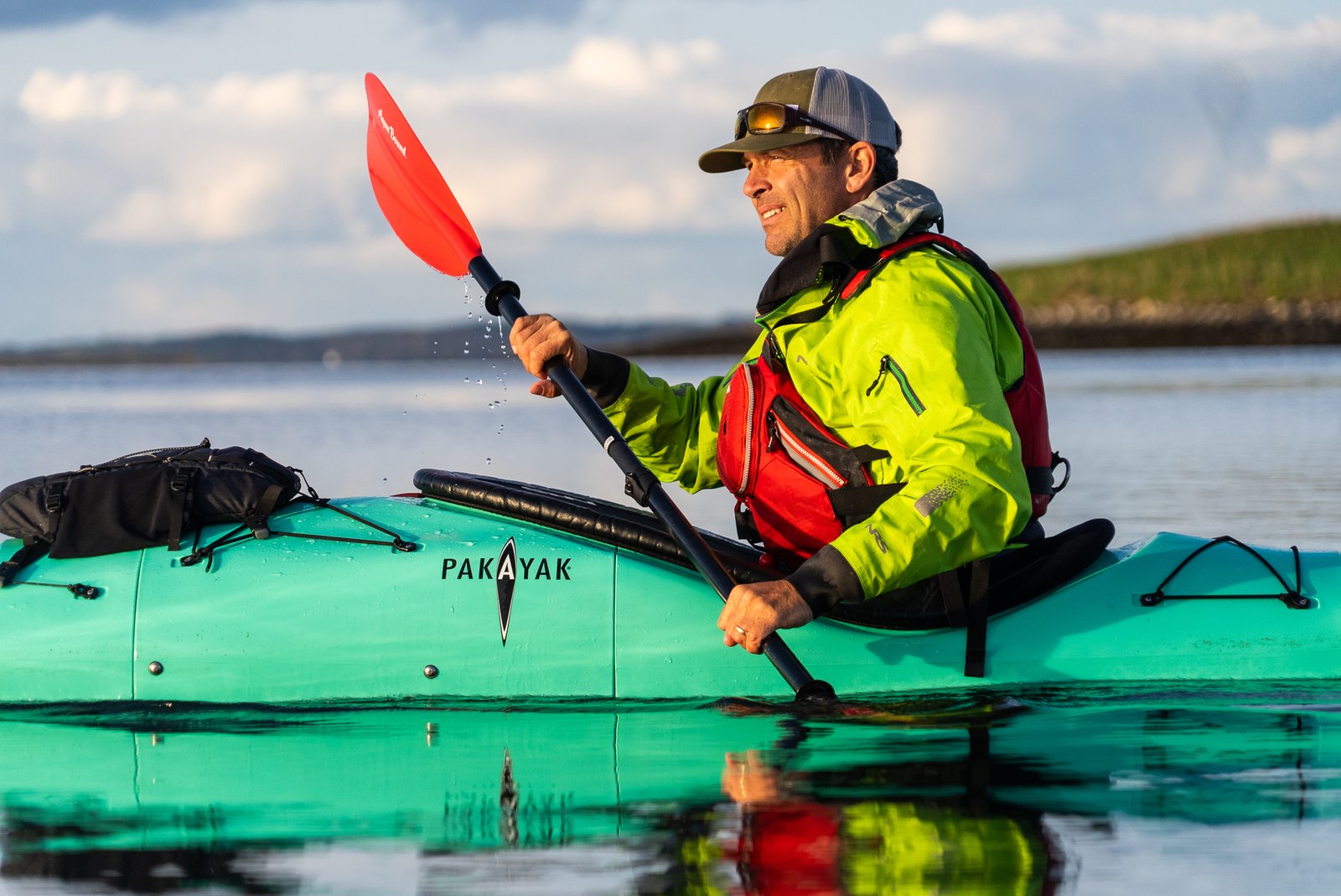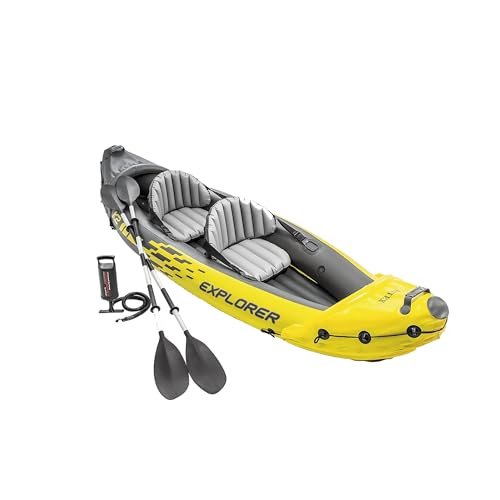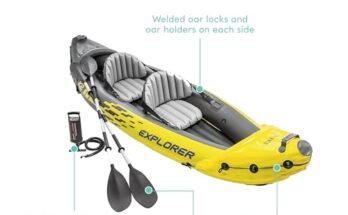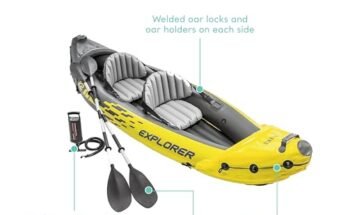Have you ever wanted to glide smoothly across the water, feeling the fresh breeze and enjoying nature up close? Kayaking is a fun and exciting way to do just that.
But if you’re new to it, the idea of getting on a kayak might seem a bit overwhelming. Don’t worry—this guide will walk you through everything you need to know to get started with confidence. By the end, you’ll be ready to paddle your way into an amazing new adventure.
Keep reading, and let’s make your first kayaking experience one to remember!

Choosing The Right Kayak
Picking the right kayak makes your paddling safe and fun. You need to think about your skill level, where you will paddle, and what you want to do.
This guide covers the main points to help beginners find a good kayak. We look at types, size and fit, and materials.
Types Of Kayaks
Kayaks come in different shapes and styles. Each type fits a certain water and use.
- Recreational Kayaks:Easy to use, best for calm water.
- Touring Kayaks:Designed for long trips and open water.
- Whitewater Kayaks:Small and strong for fast rivers.
- Inflatable Kayaks:Portable and good for beginners.
Kayak Size And Fit
The right kayak fits your body well. A good fit helps you paddle better and stay safe.
| Size | Description | Best For |
| Short (under 10 feet) | Easy to turn, less speed | Whitewater, small lakes |
| Medium (10-14 feet) | Good balance of speed and control | Recreational use |
| Long (over 14 feet) | Fast and tracks straight | Touring and long trips |
Measure your height and weight before picking. Sit in the kayak to check legroom and comfort.
Material Options
Kayaks are made from different materials. Each has good and bad points.
- Plastic:Tough and affordable but heavy.
- Fiberglass:Light and smooth but can crack.
- Composite:Very light and strong, costs more.
- Inflatable:Easy to carry, less durable.
Essential Gear And Safety Equipment
Kayaking is fun but needs the right gear to stay safe. Using proper equipment helps you enjoy the water without risks.
This guide covers the essential gear and safety tools beginners need. Always prepare before you start paddling.
Life Jackets And Pfds
A life jacket or PFD (Personal Flotation Device) keeps you afloat if you fall in the water. Choose one that fits well and is comfortable.
Wear your life jacket at all times on the water. Make sure it is Coast Guard approved for safety.
- Check the size and fit before buying
- Look for adjustable straps for a snug fit
- Choose a PFD designed for kayaking
- Inspect for damage before each trip
Paddles And Accessories
The right paddle helps you move efficiently and stay balanced. Pick a paddle with a comfortable grip and correct length.
Accessories like paddle leashes and blade covers add safety and protect your gear. Keep your paddle secure to avoid losing it.
- Choose paddle length based on your height and kayak width
- Use paddle grips to avoid slipping
- Consider a paddle leash to keep it attached
- Protect paddle blades with covers
Safety Kits And Communication Devices
Bring a safety kit with first aid supplies and tools for emergencies. These items help you handle small injuries or problems on the water.
Communication devices let you call for help if needed. Use waterproof radios or phones with protective cases.
- First aid kit with bandages and antiseptic
- Whistle to signal for help
- Waterproof flashlight or headlamp
- Waterproof phone case or VHF radio
- Extra paddle and repair kit
Basic Kayaking Techniques
Kayaking is a fun way to explore water and enjoy nature. Learning basic techniques helps you paddle safely and with ease.
These simple skills make your time on the water more enjoyable. Focus on paddling, steering, and getting in and out of your kayak.
Paddling Strokes
Paddling strokes move your kayak forward, backward, or turn it. Knowing the right stroke saves energy and improves control.
Use these main strokes to start:
- Forward Stroke:Pull the paddle blade through the water from front to back to move ahead.
- Reverse Stroke:Push the paddle blade from back to front to move backward.
- Draw Stroke:Pull the paddle sideways to move the kayak sideways.
Steering And Turning
Steering helps you change direction while kayaking. Turning is easy once you know how to use your paddle.
Try these tips for better control:
- Use sweep strokes: move the paddle in a wide arc to turn the kayak.
- Lean your body slightly to help the kayak turn faster.
- Combine forward and sweep strokes for smooth turns.
Getting In And Out Of The Kayak
Safe entry and exit keep you balanced and prevent tipping over. Always do this carefully, especially in water.
Follow these steps:
- Place your kayak parallel to the shore or dock.
- Sit on the edge first, then swing your legs inside.
- Keep your weight low and centered while entering or exiting.
- Hold the paddle or dock for support if needed.
Choosing Safe Water Conditions
Kayaking is fun but requires safe water conditions. Check the environment before you go out.
Knowing how to read weather and water can keep you safe on your trip.
Assessing Weather And Water
Look at the weather forecast before kayaking. Avoid strong winds and storms. Calm water is best for beginners.
- Check wind speed and direction
- Look for rain or storms
- Observe water temperature
- Watch for waves or currents
Avoiding Hazards
Spot dangers in the water and near shore. Avoid places with fast currents or underwater rocks. Stay away from boat traffic.
| Hazard | Why to Avoid |
|---|---|
| Strong currents | Can pull you off course or capsize your kayak |
| Underwater rocks | May damage your kayak or cause injury |
| Boat lanes | High risk of collision with motorboats |
| Floating debris | Can block your path or cause accidents |
Planning Your Route
Plan a clear route before you start. Know where you will launch and land. Choose easy paths with rest spots.
- Map out your start and end points
- Pick routes with calm water and little traffic
- Identify safe places to stop if needed
- Tell someone your plan and expected return time
Launching And Landing Tips
Kayaking is fun but needs care when starting and finishing your trip. Good launching and landing skills keep you safe and dry. This guide helps beginners learn key tips for both.
Focus on steady moves and watch the water and weather. This way, you enjoy kayaking and avoid accidents near shorelines.
Safe Launch Procedures
Launching your kayak safely means getting in and out of the boat without tipping over. Find a calm, shallow spot with a soft bottom to start. Keep your paddle ready and steady yourself before sitting down.
- Check water conditions for waves and current.
- Wear a properly fitted life jacket.
- Place the kayak parallel to shore.
- Enter the kayak by sitting at the middle seat.
- Use your paddle to balance as you push off gently.
- Keep your weight low and centered.
Landing Strategies
Landing needs care to avoid tipping or damage. Slow down as you near the shore. Aim to land where the water is shallow and clear of rocks or debris. Use your paddle to stop or steer gently onto the beach.
| Landing Tip | Reason |
| Approach shore slowly | Prevents capsizing |
| Keep paddle in front | Helps balance and control |
| Exit at shallow spot | Easy and safe exit |
| Secure kayak after landing | Prevents drifting |
Handling Rough Shorelines
Rough shorelines with rocks and waves need special care. Avoid landing directly on sharp rocks. Look for a sandy or grassy area nearby. Use your paddle and body to absorb the impact of waves.
Tips for rough shorelines:
- Wear water shoes for foot protection.
- Keep kayak pointed into waves when landing.
- Use paddle to brace against rocks and waves.
- Exit kayak quickly but carefully to avoid injury.

Basic Rescue And Self-help Skills
Learning to kayak is exciting and fun. Safety is important, especially on water. Knowing basic rescue skills helps you stay safe.
These skills help if you tip over or face trouble. Practice them to feel confident and secure while kayaking.
Self-rescue Techniques
Self-rescue is important when you kayak alone. It helps you get back in your kayak after falling out.
First, stay calm. Hold onto your kayak to prevent it from drifting away. Use the paddle float to stabilize the kayak.
- Attach the paddle float to your paddle.
- Use the paddle as an outrigger for balance.
- Kick your legs and slide back into the kayak.
Assisted Rescue Methods
Kayaking with friends is safer. Assisted rescue methods help when someone else is nearby.
One common method is the T-rescue. It involves one kayaker stabilizing another’s kayak while they climb back in.
- The rescuer positions their kayak perpendicular to the capsized one.
- The paddler climbs onto the rescuer’s kayak for support.
- They slide back into their own kayak.
Preventing Capsizes
Preventing capsizes is better than recovering from them. Balance and awareness help you stay upright.
Keep your body centered over the kayak. Lean with your hips, not your upper body, when turning.
- Practice leaning and bracing techniques.
- Keep your paddle in the water for stability.
- Be aware of waves and currents.
Environmental Awareness
Kayaking is a fun way to enjoy nature. It’s important to protect the environment while you paddle.
Understanding how your actions affect nature is key. Be mindful of your surroundings at all times.
Protecting Wildlife
Wildlife is part of what makes kayaking special. You must keep a safe distance from animals.
Avoid making loud noises. This helps prevent disturbing wildlife in their natural habitat.
- Do not feed wild animals
- Observe from a distance
- Avoid nesting areas
Leave No Trace Practices
Leaving no trace means not leaving any signs of your visit. Carry out everything you bring in.
Clean up any litter you find, even if it’s not yours. This helps keep the waterways clean.
- Pack out all trash
- Use biodegradable soap
- Stay on marked paths
Respecting Local Regulations
Local rules are in place to protect nature and people. Always follow them.
Check regulations before you go kayaking. This includes any permits you might need.
- Know local wildlife protection laws
- Obtain necessary permits
- Follow area-specific guidelines

Frequently Asked Questions
What Equipment Do Beginners Need For Kayaking?
Beginners need a kayak, paddle, life jacket, and proper clothing. A spray skirt and helmet may be required for rough waters. Quality gear ensures safety and comfort while learning basic paddling techniques.
How Do Beginners Steer A Kayak Properly?
To steer, beginners use paddle strokes on one side to turn. The sweep stroke helps turn wide, while the draw stroke moves sideways. Practice these to control direction and improve maneuverability on water.
What Safety Tips Should Beginners Follow Kayaking?
Always wear a life jacket and check weather conditions before kayaking. Inform someone about your plans and avoid strong currents. Carry a whistle or signaling device for emergencies to stay safe on the water.
How Can Beginners Improve Kayaking Skills Quickly?
Practice paddling regularly in calm waters to build confidence. Take lessons to learn proper techniques and safety measures. Focus on balance, stroke efficiency, and navigation skills for faster improvement.
Conclusion
Kayaking starts with simple steps and careful practice. Choose the right kayak and wear safety gear. Learn basic paddling and steering techniques early. Stay calm and enjoy the water around you. Practice in calm areas before trying strong currents. Remember, patience helps you improve day by day.
Kayaking can bring fun and peace to your life. Keep exploring and respect nature while you paddle. Your next adventure awaits on the water!



